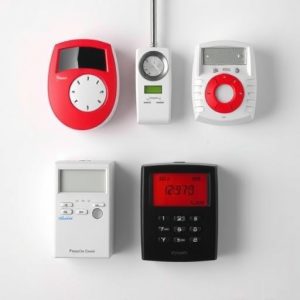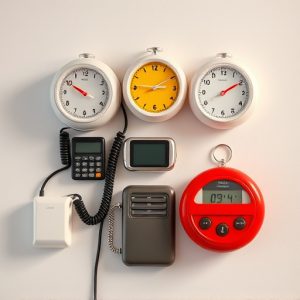Personal Safety Devices: Understanding Panic Alarms and Their Effective Carry Distance
Panic alarms offer crucial emergency protection with their powerful sound and long carry distance, a…….
Panic alarms offer crucial emergency protection with their powerful sound and long carry distance, attracting attention and deterring potential attackers. Key features include loudness, range (up to 400ft), ease of use, durability, water resistance, and advanced tech like directional speakers. Keep them within easy reach for quick activation in remote or dangerous areas. Regular testing ensures their effectiveness as a vital personal safety tool.
In today’s unpredictable world, personal safety is paramount. Emergency situations can arise unexpectedly, making it crucial to be prepared with effective tools like panic alarms. This comprehensive guide explores the basic concept and benefits of panic alarms, delving into key features to consider during selection. We’ll also discuss the impressive carry distance of these devices, offering tips for optimal usage in diverse scenarios. By understanding panic alarms’ capabilities, you can make informed choices to enhance your personal safety and peace of mind.
- Understanding Panic Alarms: The Basic Concept and Its Benefits
- Key Features to Consider When Choosing a Personal Safety Device
- How Far Can a Panic Alarm Sound Travel? Effective Range and Factors Affecting It
- Carry and Usage Tips for Ensuring Maximum Effectiveness in Emergencies
- Real-Life Scenarios: When and Why Personal Safety Devices Prove Indispensable
Understanding Panic Alarms: The Basic Concept and Its Benefits
Panic alarms are designed to help individuals in emergency situations by emitting a loud and distinct sound that can attract attention and alert others nearby. The basic concept is simple: when triggered, the alarm produces a high-intensity sound that can carry a significant distance, ensuring maximum visibility and potential rescue. This feature makes panic alarms particularly useful for personal safety, especially in remote or crowded areas.
The benefits of panic alarms extend beyond their auditory signal. They offer individuals peace of mind, knowing they have a tool to signal distress swiftly. The loud sound can deter potential attackers or intruders, providing a crucial few moments for the wearer to escape or gather help. Moreover, the carry distance ensures that even in bustling settings or vast open spaces, the alarm’s signal will be heard, increasing the chances of timely intervention.
Key Features to Consider When Choosing a Personal Safety Device
When choosing a personal safety device, several key features should be at the top of your list to ensure effectiveness in emergency situations. First and foremost, consider the panic alarm sound. Look for devices that emit loud, distinct signals designed to attract attention quickly. This could make all the difference in getting help promptly. Additionally, check the carry distance of the signal. Some devices are designed to broadcast a signal over long distances, ensuring you can be located even if you’re far from civilization or in a poorly lit area.
Other crucial aspects include ease of use, durability, and battery life. You’ll want a device that’s easy to activate, even in moments of panic, and one that’s built to withstand harsh conditions. Long-lasting batteries are essential to avoid being stranded without your safety device due to a dead power source. Think about water resistance as well, especially if you plan on using it while hiking or near bodies of water.
How Far Can a Panic Alarm Sound Travel? Effective Range and Factors Affecting It
The effective range at which a panic alarm sound can travel varies significantly depending on several factors. Typically, a well-loudened panic alarm can be heard up to 400 feet (approximately 122 meters) away in ideal conditions. However, this distance can be affected by the environment, including terrain, weather, and obstructions like buildings or trees. In open spaces, the sound travels farther without interference, while urban environments with tall structures can echo or muffle the alarm’s reach.
The pitch, volume, and type of panic alarm also play crucial roles in its carry distance. Higher-pitched alarms often travel further than lower-pitched ones due to their ability to cut through background noise more effectively. Additionally, advanced panic alarms incorporate technology like directional speakers and smart signal amplification, enhancing their range and ensuring that help arrives faster during emergencies.
Carry and Usage Tips for Ensuring Maximum Effectiveness in Emergencies
When carrying a personal safety device like a panic alarm, positioning and accessibility are key. Keep it easily reachable in a pocket or on a lanyard, ensuring it’s within quick grasp during an emergency. The carry distance is crucial; aim to have it close at all times, especially when walking alone or in unfamiliar areas. Testing the device regularly is equally important. Practice activating the panic alarm sound to familiarize yourself with its loudness and range, making sure it can alert nearby people and authorities effectively.
Remember, the goal is for the alarm to make a significant noise that draws attention, so don’t be shy about using it when needed. In an emergency, quickly activate the device, allowing the high-decibel panic alarm sound to signal distress and potentially deter potential harm.
Real-Life Scenarios: When and Why Personal Safety Devices Prove Indispensable
In real-life emergency situations, personal safety devices can be indispensable tools for anyone facing dangerous or unpredictable circumstances. Scenarios such as getting lost in a remote area, encountering aggressive individuals, or finding oneself in a violent attack require swift and effective means of protection. A panic alarm, with its high-decibel sound, can serve as a powerful deterrent against potential threats. Carried on your person, these devices ensure you have the ability to attract attention and signal for help quickly, even if you’re far from civilization or communication signals. The carry distance of these alarms is a crucial factor; they should be designed to project a clear sound over an adequate range, allowing users to alert nearby people or emergency services in time.
Moreover, panic alarms often come with additional features like GPS tracking, allowing loved ones or emergency responders to pinpoint your location. This functionality can significantly enhance the effectiveness of rescue operations, especially in remote locations where traditional signaling methods may not be feasible. By combining loud sounds, long-range signals, and advanced tracking capabilities, personal safety devices offer a multi-faceted approach to ensuring individuals’ well-being during critical moments.
Personal safety devices, such as panic alarms, can be life-saving tools in emergency situations. By understanding their basic concept, key features, and effective range (including factors affecting carry distance like terrain and noise level), individuals can maximize their effectiveness. Carrying and using these devices strategically, along with awareness of real-life scenarios where they prove indispensable, ensures preparedness and peace of mind. A panic alarm’s sound can travel surprisingly far, alerting bystanders and emergency services when you need it most.


